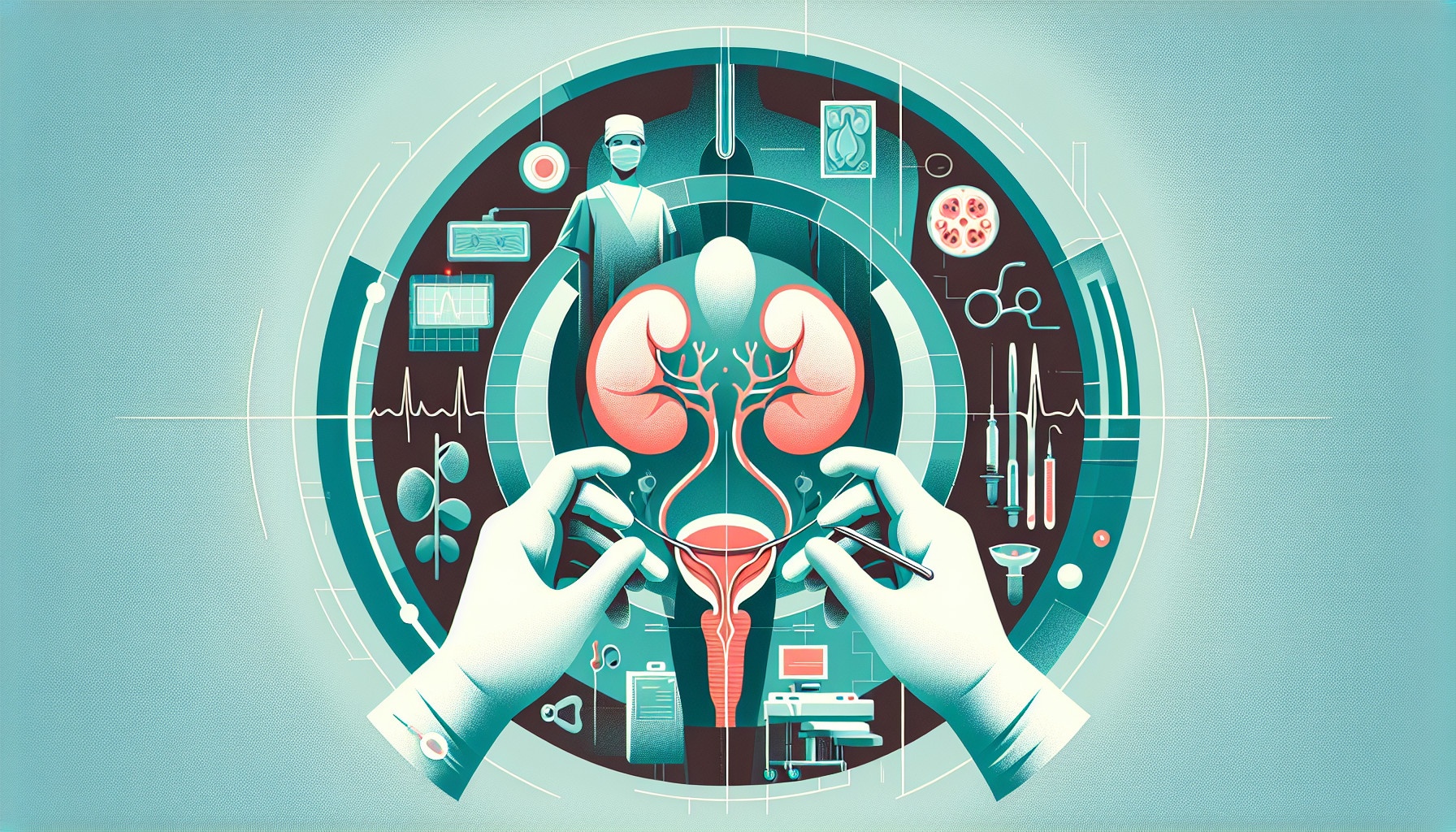Our Summary
This research paper is about improving surgical techniques for bladder reconstruction, particularly in patients with neurogenic lower urinary tract dysfunction (nLUTD). Typically, these surgeries have been complex and challenging, but the authors highlight new, minimally invasive techniques that can improve patient outcomes.
They detail four types of innovative procedures: (A) ileal bladder augmentation, which involves using a small incision or laparoscopy and robotics; (B) creating a channel for catheterization using laparoscopy and robotics; (C) creating both a bladder augmentation and catheterizable channel using a hand-assisted approach; and (D) implanting an artificial urinary sphincter using robotics.
The authors believe that as technology improves and medical professionals gain more experience with robotics, these minimally invasive techniques will continue to advance. This is especially important for patients with nLUTD, who require surgical solutions that can greatly improve their quality of life over many years.
FAQs
- What are the four innovative procedures for bladder reconstruction detailed in the research paper?
- How might minimally invasive techniques for bladder reconstruction improve in the future?
- Why are these minimally invasive techniques particularly important for patients with neurogenic lower urinary tract dysfunction (nLUTD)?
Doctor’s Tip
One helpful tip a doctor might tell a patient about bladder surgery is to follow post-operative care instructions carefully to ensure proper healing and minimize the risk of complications. This may include taking prescribed medications, avoiding strenuous activities, and attending follow-up appointments with your healthcare provider. It’s also important to communicate any concerns or changes in symptoms to your doctor promptly. By being proactive in your recovery process, you can help ensure the best possible outcome from your bladder surgery.
Suitable For
Patients with neurogenic lower urinary tract dysfunction (nLUTD) are typically recommended bladder surgery to improve bladder function, reduce incontinence, and enhance quality of life. nLUTD can result from various conditions such as spinal cord injury, multiple sclerosis, spina bifida, and other neurological disorders that affect the nerves controlling bladder function.
Patients with nLUTD may experience symptoms such as urinary retention, urinary incontinence, frequent urinary tract infections, and difficulty emptying the bladder. These symptoms can significantly impact a patient’s quality of life and may lead to complications such as kidney damage if not properly managed.
Bladder surgery may be recommended for patients who have not responded to conservative treatments such as medications, catheterization, and pelvic floor exercises. The goal of bladder surgery in patients with nLUTD is to improve bladder storage and emptying functions, reduce incontinence episodes, and prevent urinary tract infections.
Some common indications for bladder surgery in patients with nLUTD include bladder augmentation, continent urinary diversion, artificial urinary sphincter placement, and bladder neck reconstruction. These surgical procedures aim to improve bladder capacity, reduce intravesical pressure, enhance continence, and facilitate efficient bladder emptying.
Overall, patients with nLUTD who have failed conservative treatments and continue to experience significant bladder dysfunction may benefit from bladder surgery to improve their quality of life and prevent long-term complications. It is important for healthcare providers to carefully evaluate each patient’s unique condition and recommend the most appropriate surgical intervention based on their individual needs and goals.
Timeline
Before bladder surgery, a patient typically undergoes a series of diagnostic tests, consultations with urologists and other specialists, and pre-operative preparations such as blood tests and imaging scans. They may also receive counseling on the risks and benefits of the surgery, as well as alternative treatment options.
During the surgery, the patient is put under anesthesia and the procedure is performed according to the planned technique, whether it be ileal bladder augmentation, creating a catheterizable channel, bladder augmentation with a catheterizable channel, or implanting an artificial urinary sphincter.
After the surgery, the patient will be closely monitored in the hospital for any complications or side effects. They will receive pain management, antibiotics to prevent infection, and instructions on post-operative care. This may include catheterization, wound care, dietary restrictions, and physical therapy.
In the weeks and months following the surgery, the patient will attend follow-up appointments to assess their recovery progress, monitor for any complications, and make any necessary adjustments to their treatment plan. They may also undergo additional tests to evaluate the success of the surgery and their overall bladder function.
Overall, the goal of bladder surgery is to improve the patient’s urinary function, alleviate symptoms, and enhance their quality of life. With advancements in minimally invasive techniques, patients with nLUTD can benefit from safer, more effective surgical options that offer long-term relief.
What to Ask Your Doctor
- What specific type of bladder surgery do you recommend for my condition?
- What are the potential risks and complications associated with the surgery?
- What is the expected recovery time and post-operative care plan?
- Will I require any additional procedures or treatments after the surgery?
- How will this surgery improve my symptoms and quality of life in the long term?
- What are the success rates of this type of surgery for patients with similar conditions?
- Are there any alternative treatments or surgical options that I should consider?
- How experienced are you and your surgical team in performing this type of bladder surgery?
- Will I need to make any lifestyle changes or modifications after the surgery?
- How often will I need follow-up appointments to monitor my progress and recovery?
Reference
Authors: Nimeh T, Elliott S. Journal: Curr Urol Rep. 2018 Apr 13;19(6):39. doi: 10.1007/s11934-018-0787-y. PMID: 29654429
